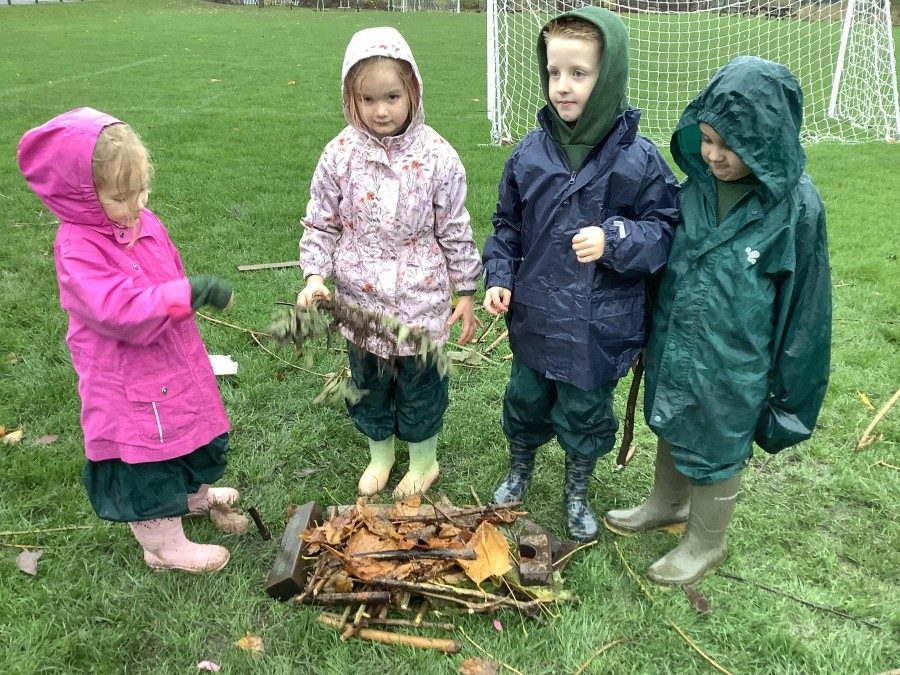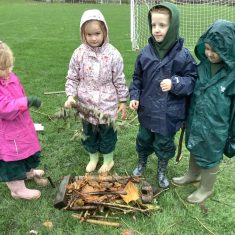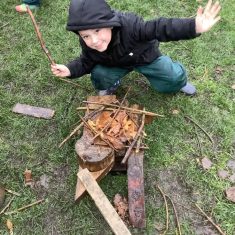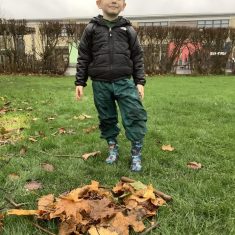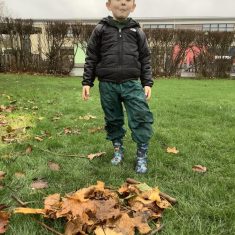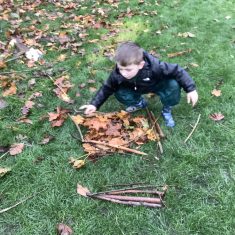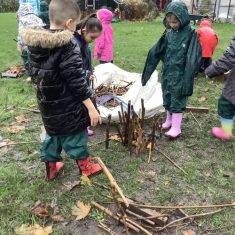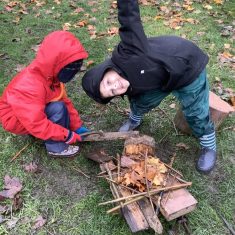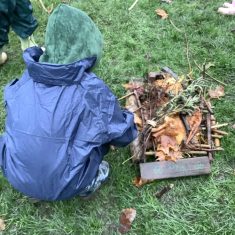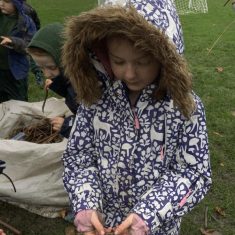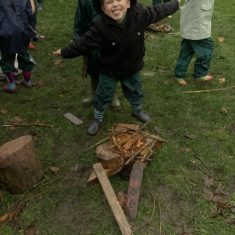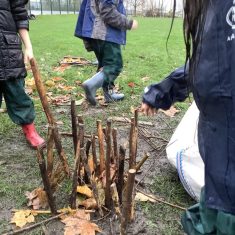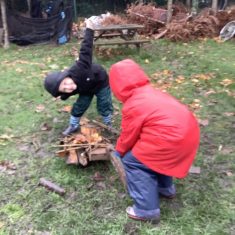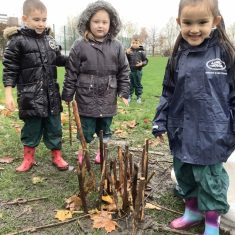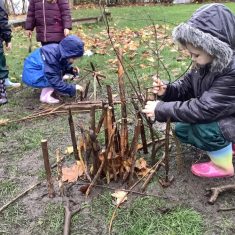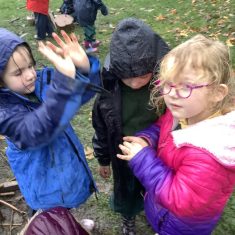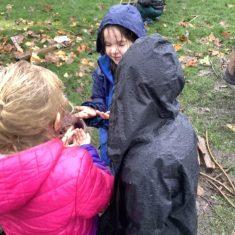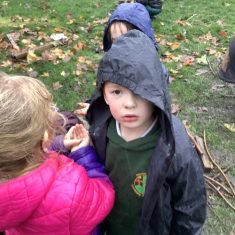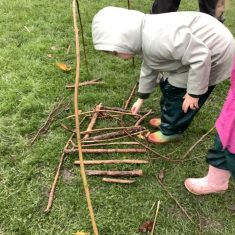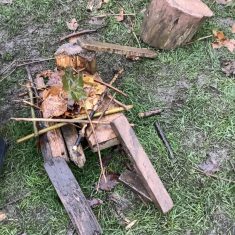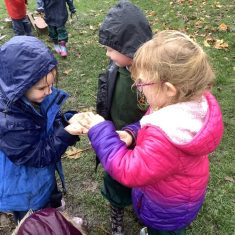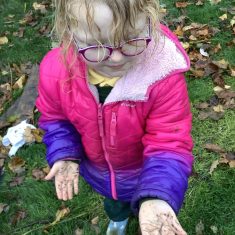A wet and woolly day for Year 1. They are enjoying learning about construction in nature, how animals keep themselves safe, what materials they might need, what shapes we might see. Thinking about animals and birds that nest, they searched in the woodland for twigs and leaves to create nests of their own. It was really interesting to see how they interpreted this task. Most worked to create circular shapes, but some children did this by pushing sticks into the ground vertically which created a kind of crown shape, they then added leaves to give comfort. Others worked in a more traditional method, laying sticks horizontally but working in a round. During reflection the children talked about whether the nests with upright sticks would be nice to sleep in with all those spikes, but then it was pointed out that if the creature slept at the bottom on a bed of leaves the spikes would protect them from predators.
This reflective practice is a feature of each session, whether its carried out as a class or with individuals. It ensure learners and practitioners can understand their achievements, realise the mind-set behind a particular decision, helps develop emotional intelligence and this knowledge can then be applied to future projects.
Principle 1: Forest School is a long-term process of frequent and regular sessions in a woodland or natural environment, rather than a one-off visit. Planning, adaptation, observations and reviewing are integral elements of Forest School.
- Meanwhile digging for worms is an exciting distraction.
- They feel so strange on your hands.
